Welcome to our coffee chat! Ever wonder why that morning cup of coffee kicks you into gear? It's all because of caffeine, the magic behind the buzz. Coffee and caffeine go hand in hand to wake us up and keep us moving. Curious about how much caffeine is actually in your coffee? You're not alone. The amount of caffeine can vary a lot—from your light morning brew to that strong espresso shot. Let's dive into the world of coffee together and discover all there is to know about caffeine, from how much caffeine is in a cup of coffee to tips on enjoying your brew just right. Stick around as we spill the beans on everything caffeine!
What Exactly is Caffeine?
Caffeine is a natural stimulant found in coffee beans, tea leaves, and cocoa beans. It's like your morning alarm, but inside your body, it wakes up your brain and makes you feel more alert and awake. Think of it as a little energy booster that helps shake off the sleepiness and get you ready for the day.
Wondering if your coffee's kick depends on it being instant or ground? You might find our 'instant coffee vs ground coffee' comparison helpful in picking your perfect brew.

Where You'll Find Caffeine
Apart from your beloved coffee, caffeine pops up in many places. You'll find it in tea, chocolate, some soft drinks, and even certain medications for headaches and colds. It's pretty popular because of its ability to keep us on our toes and make us feel more energetic.
Wondering about the caffeine content in your instant brew? Learn how to make instant coffee the right way to manage your caffeine intake.
Comparing Coffee With Other Caffeinated Drinks

When it comes to caffeine, not all drinks are created equal. A standard cup of coffee packs more caffeine than a cup of tea or a can of soda. For example, an average cup of coffee might have about 95 mg of caffeine, while tea can vary from 20 to 60 mg, and most soft drinks hover around 20 to 40 mg per can. Then there's energy drinks, which can really ramp up the caffeine content, sometimes hitting up to 250 mg per serving.
Here's a table comparing the caffeine content in different drinks:
| Drink | Caffeine Content (mg) |
|---|---|
| Coffee (8 oz) | 95 |
| Black Tea (8 oz) | 47 |
| Green Tea (8 oz) | 28 |
| Soft Drink (12 oz) | 22 |
| Energy Drink (8 oz) | 80 |
Remember, while caffeine is a handy pick-me-up, how much you have can make a big difference in how you feel. Too much might leave you feeling jittery or mess with your sleep, so it's all about finding the right balance for you.
How Much Caffeine is in Your Coffee?

Let's delve into how much caffeine is in your coffee, a question many of us ponder while enjoying our daily java. The caffeine content can significantly vary depending on the coffee type and preparation method. Here’s a clearer look, with keywords highlighted for emphasis.
- Regular Brewed Coffee: This standard go-to for many averages about 95 mg of caffeine per 8 oz cup. Yet, this amount can swing from 70 to 140 mg, influenced by the Whole Bean Coffee type and the brew's strength.
- Espresso: Famous for its intense taste, a single espresso shot (roughly 1 oz) contains about 63 mg of caffeine. For those who prefer lattes and cappuccinos, these drinks usually have one or two shots, increasing the caffeine content accordingly.
- Instant Coffee: A convenient choice, an 8 oz cup of instant coffee offers 30 to 90 mg of caffeine, making it a slightly milder caffeine source.
- Decaf Coffee: Ideal for those limiting their caffeine but craving coffee flavour, an 8 oz cup of decaf coffee typically holds about 2 to 5 mg of caffeine, showcasing a minimal but not non-existent caffeine level.
Understanding the caffeine content in your coffee choice can aid in managing your intake, especially important for those sensitive to caffeine's effects.
What Changes Caffeine Amounts in Coffee
A few factors that determine how much caffeine is in your coffee include:
- Coffee Bean Type: The choice between Robusta and Arabica beans affects caffeine levels. Robusta beans have more caffeine compared to Arabica.
- Roast Level: Despite a bolder flavour from dark roasts, light roasts actually retain more caffeine because the roasting process reduces caffeine in the beans.
- Grind Size and Brewing Method: A finer grind, as used in espresso, and brewing methods that allow water to contact the coffee grounds longer can extract more caffeine. French press or cold brew methods are examples where caffeine content might increase due to prolonged brewing times.
How Big is Your Coffee? Understanding Sizes

The size of your coffee significantly affects your caffeine intake:
- Standard Cup Size: The usual reference for a cup of coffee is 8 oz, containing about 95 mg of caffeine for brewed coffee.
- Larger Cups and Mugs: With travel mugs and takeaway sizes ranging from 12 oz to over 20 oz, you could be consuming much more caffeine than you realize.
Comparing Regular, Espresso, and Instant Coffee
When it comes to caffeine, not all coffees are created equal. A standard cup of regular brewed coffee has more caffeine than espresso or instant coffee. However, espresso has a higher concentration of caffeine per ounce, and the caffeine content in instant coffee can vary.
Coffee Caffeine Content Table
| Type of Coffee | Size | Caffeine Content (average) |
|---|---|---|
| Regular Brewed | 8 oz | 95 mg |
| Espresso | 1 oz (1 shot) | 63 mg |
| Instant Coffee | 8 oz | 30-90 mg |
This table shows that an 8 oz regular brewed coffee typically has about 95 mg of caffeine, whereas a single espresso shot contains about 63 mg, demonstrating how different brewing methods and serving sizes impact caffeine content.
Understanding these elements about your coffee—bean type, roast level, grind size, brewing method, and serving size—can help you manage your caffeine consumption more effectively, ensuring you get the perfect balance in every cup.
How to Manage Your Caffeine

- Keep Track of Your Drinks: It's important to monitor how much caffeine in a cup of coffee or other beverages you consume daily. Whether it's coffee, tea, or energy drinks, being aware helps in management.
- Understand Safe Caffeine Levels: Recognize that up to 400 mg of caffeine per day is considered safe for most adults. This equates to about four 8 oz cups of brewed coffee, depending on the caffeine in coffee content.
- Choose Portion Sizes Wisely: Knowing how many ml in an oz or how many ounces in a shot can help you decide on smaller portions to reduce your caffeine intake without cutting out coffee entirely.
- Consider Decaf Alternatives: If reducing caffeine is your goal, decaf coffee can be a great choice. Mixing decaf with regular coffee can also help lower the overall caffeine in a cup of coffee.
- Limit Late-Day Consumption: Caffeine can affect sleep, so limiting intake in the afternoon and evening is wise. Knowing how much caffeine is in coffee or how much caffeine in espresso can guide your choices.
- Stay Hydrated with Water: Sometimes, thirst is mistaken for fatigue. Drinking water may reduce the urge for caffeinated drinks, aiding in better caffeine management.
By incorporating these strategies and understanding terms like ml to cups, 500 ml to oz, and 200 ml to oz, you can enjoy your coffee responsibly, keeping caffeine in coffee at enjoyable yet healthy levels.
Measuring Your Coffee Right

When it comes to enjoying a perfect cup of coffee, knowing how much caffeine in coffee is crucial. Whether you're curious about how much caffeine in a cup of coffee or you're trying to keep tabs on your intake, we've got you covered. Let's break it down into simple steps and tools you can use to keep your caffeine levels just right, without needing a science degree!
Tools for Keeping Track of Caffeine
- Digital Kitchen Scale - Start with a digital kitchen scale. This nifty gadget is key to precision. It helps in understanding how many mg of caffeine in coffee by first measuring the Best Ground Coffee UK you use. Remember, how much coffee per cup directly influences your caffeine intake.
- Caffeine Calculator Apps - There are apps designed to track how much caffeine is in a cup of coffee. Simply input the type of coffee, the amount in ml to cups or ounces in a shot, and the app does the math. It's especially handy if you're wondering about things like how much caffeine in a shot of espresso or how many ounces in a shot glass of your favorite brew.
- Conversion Charts - Often, coffee recipes talk in terms of ml and oz. Keeping a conversion chart handy helps translate 500 ml to oz or 150 ml to oz, making it easier to gauge how much caffeine in coffee you're actually consuming. Plus, it answers the age-old question of how many ml in an oz without breaking a sweat.
- Measuring Spoons and Cups - For those who prefer a simpler approach, measuring spoons and cups do the trick. They help ensure you're not overdoing it with the grounds. Understanding how many cups in a 16 oz container or how much caffeine in cup of coffee becomes straightforward with these tools.
- Caffeine Content Guides - Keep a caffeine content guide at your coffee station. This guide can quickly tell you how many mg of caffeine in a cup of coffee based on different types of coffee beans and brew strengths. It's a quick reference to see if is 200 mg of caffeine a lot for you personally.
Remember, everyone's caffeine tolerance is different. What might be a lot for one person could be just right for another. Whether you're converting 300 ml to oz to get your proportions right, or figuring out how many ounces in 1/3 cup for a precise brew, these tools and tips will keep you on track. So next time you're brewing your favorite best instant coffee, you'll know exactly how to measure for that perfect kick!
How Much Caffeine is Okay?
Ever found yourself wondering, "is 200 mg of caffeine a lot?" or "how much caffeine in coffee should I be drinking?" You're not alone. Caffeine is a beloved part of many people’s morning rituals, but it's also something to consume with a bit of know-how. Let's break down the safe levels of caffeine to keep your coffee game both enjoyable and healthy.
Safe Levels of Caffeine
- The Golden Number - Health experts often say that up to 400 ml to oz of caffeine per day is safe for most adults. This roughly translates to about 4 ounces to cups of coffee, depending on how much caffeine in cup of coffee there is. It's a handy benchmark to remember when you're brewing your daily cups.
- Personal Tolerance - While 400 ml to oz (or 4 ounces to cups) is a general guideline, how much caffeine is in coffee and how it affects you can vary widely. Some folks might find that 200 ml to oz of caffeine (about 2 cups of coffee) is their sweet spot. Listen to your body, and if you start feeling jittery or anxious, it might be a sign to cut back.
- Special Considerations - For some people, especially those with certain health conditions or pregnant women, the safe level of caffeine in coffee might be lower. The question of "how much caffeine in a cup of coffee is safe?" becomes more nuanced, and consulting with a healthcare provider is a wise step.
- Measuring Caffeine Intake - Keep track of how much caffeine is in a cup of coffee you drink. Remember, a cup of coffee caffeine content can vary. A standard cup might have about 95 mg of caffeine, but how much caffeine in a shot of espresso or a cup of coffee from your favorite café could be more. Knowing how many mg of caffeine in coffee you consume helps you stay within safe limits.
- Adjusting Your Consumption - If you're nearing the upper limit of safe caffeine intake (is 200 mg of caffeine a lot for you?), consider adjusting. This might mean switching to best instant coffee with lower caffeine levels or mixing decaf with regular coffee to lower the mg of caffeine in coffee per cup.
In the grand scheme of things, enjoying your coffee responsibly means keeping an eye on how much caffeine in coffee you're consuming. Whether it's how many ounces in a shot of espresso or how much caffeine in a cup of coffee, knowing your limits ensures you can enjoy your brew without worry. So next time you pour yourself a cup, take a moment to consider how much caffeine is okay for you. Happy brewing!
Choosing Your Coffee Wisely

Coffee isn't just a beverage; it's a journey of flavours, aromas, and experiences. With Presto Coffee’s wide range of offerings, including instant coffee, coffee bag, fresh coffee, and coffee beans, how do you decide which one to take home? Here are a few tips to help you navigate through the sea of choices and find your perfect match.
- Know Your Taste: The first step in choosing wisely is understanding your own taste preferences. Do you prefer a bold and rich flavour or something light and fruity? Your taste preference will guide you whether coffee beans for a customizable grind or the best instant coffee for convenience suits you better.
- Consider Your Routine: How much time do you have for your coffee ritual? If you're always on the go, instant coffee or coffee bags might be your best bet. For those who relish their coffee-making process, fresh coffee or grinding your own coffee beans could be the highlight of your morning.
- Explore the Origins: Coffee beans come from all around the world, each offering a unique flavour profile. Whether it's the robust, earthy notes of Indonesian beans or the bright acidity of African coffee, exploring different origins can vastly enrich your coffee experience. Presto Coffee offers a variety of origins to explore, ensuring there’s something for every palate.
- Roast Types Matter: The roast level can significantly affect the taste of your coffee. Light roasts offer more acidity and preserve the bean's original flavour, while dark roasts provide a bolder, more intense coffee experience. Whether you prefer fresh coffee or coffee beans, choosing the right roast is key to enjoying your cup to the fullest.
- Sustainability and Ethics: Knowing where and how your coffee is sourced can also influence your decision. Presto Coffee is committed to sustainability and ethical sourcing, ensuring that every sip supports not just your taste buds but also the environment and coffee communities.
What Happens When You Have Too Much Caffeine

When you drink too much coffee, several noticeable effects can occur. It's crucial to be aware of these so you can manage your caffeine in coffee intake responsibly. Here's a detailed look at the potential side effects:
- Increased Anxiety: Too much caffeine can lead to heightened feelings of anxiety. This is because caffeine stimulates your nervous system, making you feel more awake but also potentially more anxious.
- Heart Palpitations: Excessive caffeine can cause your heart to beat faster or irregularly, known as palpitations. This is a direct response to the stimulant effect of caffeine in coffee on your cardiovascular system.
- Insomnia: One of the most common issues with high caffeine consumption is difficulty sleeping or insomnia. Since caffeine is a stimulant, it can keep you awake if consumed late in the day, affecting your overall sleep quality.
- Digestive Issues: Consuming too much caffeine can lead to stomach discomfort or digestive issues. This happens because caffeine increases stomach acid, which can cause discomfort or even acid reflux for some people.
- Dehydration: Another side effect of too much caffeine in coffee is dehydration. Caffeine has diuretic properties, meaning it can lead to increased urination and, consequently, a higher risk of dehydration.
- Dependency: Regularly consuming large amounts of caffeine can lead to a dependency on it to feel alert and awake, which can make reducing intake difficult due to withdrawal symptoms like headaches and fatigue.
- Bone Density: High caffeine intake has been linked to decreased bone density in some studies. This is because caffeine can interfere with calcium absorption, which is crucial for maintaining strong bones.
Moderation is Key
While enjoying a cup of coffee is a cherished ritual for many, it's important to consume caffeine in moderation to avoid these negative effects. By being mindful of the mg of caffeine in coffee and listening to your body's responses, you can enjoy your coffee healthily and happily.
Clearing Up Coffee Confusion: Busting Coffee Myths
Coffee, our beloved morning Kickstarter and afternoon pick-me-up, often finds itself tangled in a web of myths. Let’s sift through the beans of wisdom and ground ourselves in the facts, using your provided keywords to guide us.Thinking about how much buzz is in a Flat White compared to a Latte? Our simple 'Flat White Vs Latte' article has the answers.
Myth: The More Caffeine, The Better
- Many believe that the key to the ultimate coffee experience is maximizing caffeine asking how much caffeine in a cup of coffee as if more always means better. However, it's not just about quantity (how many mg of caffeine in coffee). The quality of your brew, the flavour, and how it meshes with your body's tolerance matter more. Whether it's best instant coffee or a meticulously brewed cup of coffee caffeine content should be balanced to enjoy without overdoing it.
Myth: Espresso is Overloaded with Caffeine
- When people inquire, how much caffeine in a shot of espresso, they're often surprised to learn it's less than in a regular cup of coffee. Despite its bold flavour and rich texture, an espresso shot contains about 63 mg of caffeine, less than the mg of caffeine in coffee served in larger sizes.
Myth: All Brewing Methods Are Equal
- You might wonder how many milligrams caffeine in cup of coffee of yours after brewing. The method of brewing greatly affects caffeine in coffee. A drip coffee maker might extract more caffeine compared to a French press or espresso due to different brewing times and temperatures. It’s not just about how much coffee per cup but how you turn those beans into your beloved beverage.
Myth: Caffeine Content is Consistent Across All Coffee Types
- The assumption that caffeine in a cup of coffee is a fixed number regardless of coffee type is widespread. Yet, factors like bean variety, roast level, and grind size play significant roles. For instance, how much caffeine is in coffee can vary from one blend to another, and even how many ounces in a shot of espresso can change the caffeine dynamics.
Myth: Measuring Coffee is Complicated
- With measurements like 1/3 cup to oz, 500 ml to oz, or even 12oz to ml, some think measuring coffee is a science project. Yet, converting ml to cups or understanding how many cups in a 16 oz bag becomes simple with basic tools and a little practice. It helps in accurately determining how much caffeine in coffee you're actually consuming, ensuring you can enjoy your brew to the fullest without overstepping your caffeine comfort zone.
Frequently Asked Questions
What's the safest amount of coffee to drink each day?
The safest amount of coffee to drink each day is usually up to 400 milligrams of caffeine, equivalent to about four 8-ounce cups of brewed coffee. This amount is considered safe for most adults, but sensitivity varies.
Can decaf coffee still contain caffeine?
Yes, decaf coffee still contains caffeine, but in much smaller amounts. A typical 8-ounce cup of decaf coffee has about 2 to 5 milligrams of caffeine, compared to 80 to 100 milligrams in regular coffee.
What are the signs of consuming too much caffeine?
Signs of consuming too much caffeine include restlessness, insomnia, nervousness, stomach upset, a fast heartbeat, and even muscle tremors. If you experience these symptoms, it might be a good idea to cut back on caffeine.
How do home brewing methods affect caffeine levels in coffee?
Home brewing methods can significantly affect caffeine levels in coffee. For example, espresso generally has more caffeine per ounce than drip coffee, but because of serving sizes, a standard cup of drip coffee often contains more caffeine overall. Brewing time and temperature also play roles.
How does the caffeine content in coffee compare to that in tea?
The caffeine content in coffee is generally higher than that in tea. An 8-ounce cup of coffee typically contains 80 to 100 milligrams of caffeine, while the same amount of black tea has about 40 to 70 milligrams, and green tea has about 15 to 30 milligrams.
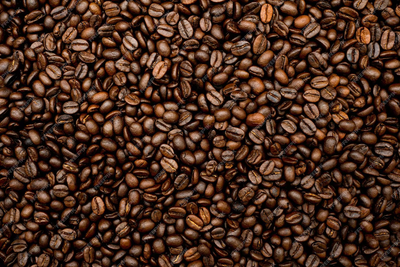
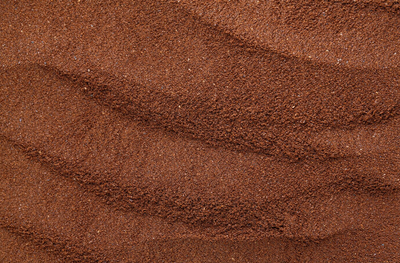
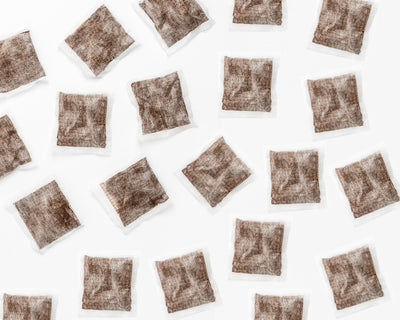
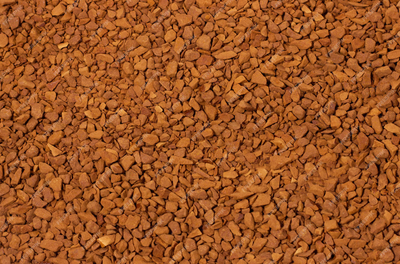

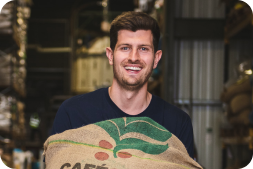
 Log in
Log in

